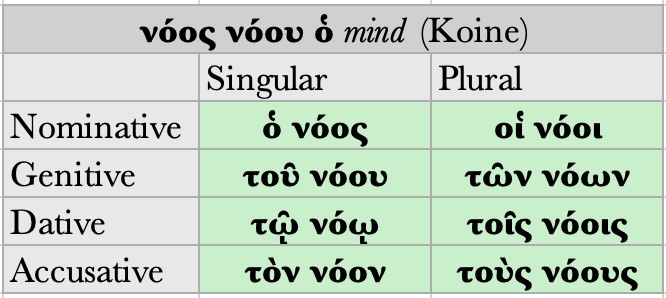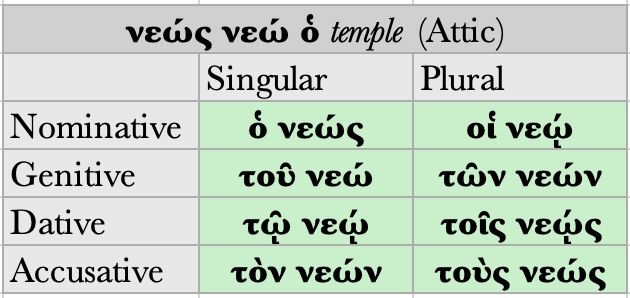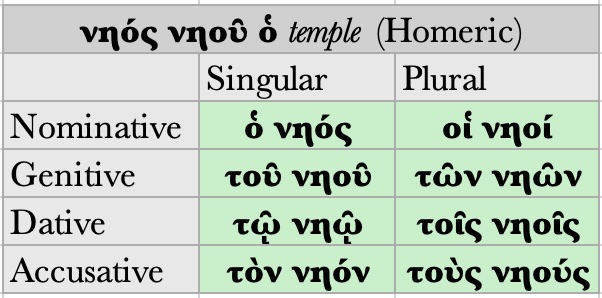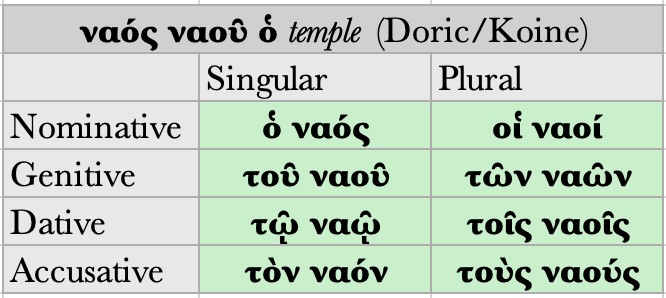20.13 In Classical Greek, it is easy to confuse these two nouns:
- νοῦς, νοῦ ὁ mind
- νεώς, νεώ ὁ temple
Let us take a look at how they can be distinguished from each other.
In many Greek dialects, this noun is inflected as a regular 2nd Declension noun:
ATTIC GREEK, however, contracts the όο/όω combinations, and accents the results accordingly (S 235, G 80). Note the circumflexes!
This noun is one of a handful of second declension nouns with a nominative singular ending in –εως. This noun in other GREEK DIALECTS actually ends in –ηος or –ᾱος.
For example, in Homer, the noun stem ends in –η:
20.17 For Doric and other dialects, including Koine, the noun stem ends in –ᾱ:
20.18 In ATTIC GREEK, however, TRANSFERENCE OF QUANTITY led to the length of the two adjoining vowels (e.g., long η/α and short ο) being switched (i.e., long η/α shortens to ε while ο lengthens to ω). So, while the Athenians would say and write νεώς, almost every other Greek in the Mediterranean would say and write νηός or νᾱός. This change in pronunciation is so peculiar to the Athenians and their Attic dialect that SECOND DECLENSION –εως nouns are called ATTIC DECLENSION NOUNS (S 237-238, G 79-81).
Only two words in our vocabulary list belong to the ATTIC DECLENSION: νεώς, νεώ, ὁ temple and λεώς, λεώ, ὁ the people, folk. Both inflect the same (S 238, G 91-93). While studying their inflection, note the following characteristics:
- The original noun stem vowel (long η/α) shortens to ε.
- ο and ου become ω
- οι becomes ῳ
- Uniquely, the ultima is accented with an acute in all forms (no circumflex belt)!










